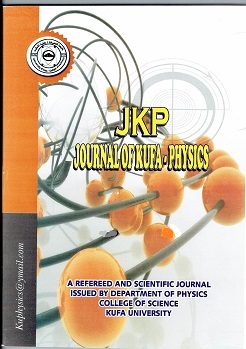A Plasmonic quantum dot nanolaser: effect of “waveguide Fermi energy” on material gain
DOI:
https://doi.org/10.31257/2018/JKP/2019/110213Keywords:
Plasmonics , Quantum-well wire , dot devices , Semiconductor lasersAbstract
This work studies the gain from plasmonic quantum dot (QD) nanolaser. A metal/semiconductor/metal (MSM) structure was considered to attain plasmonic nanocavity with active region contains: QD, wetting layer (WL) and barrier layers. Band alignment between layers was used to predict their parameters. Momentum matrix element for transverse magnetic (TM) mode in QD structure was formulated. Waveguide Fermi energy was introduced and formulated, for the first time, in this work to cover the waveguide contribution (Ag metal layer) in addition to the active region. High net modal gain was obtained when the waveguide Fermi energy was taken into account which means that the increment comes from the material gain not from the confinement factor. The change in waveguide Fermi energy in the valence band explained the high gain, where the valence band QD states are fully occupied referring to an efficient hole contribution.
Downloads
Downloads
Published
How to Cite
Issue
Section
Categories
License
Copyright (c) 2023 Jamal N. Jabir, Sabah. M. M. Ameen, Amin Habbeb Al-Khursan

This work is licensed under a Creative Commons Attribution 4.0 International License.
Journal of Kufa-Physics is licensed under the Creative Commons Attribution 4.0 International License, which allows users to copy, to create extracts, abstracts, and new works from the Article, to alter and revise the Article, and to make commercial use of the Article (including reuse and/or resale of the Article by commercial entities), provided the user gives appropriate credit (with a link to the formal publication through the relevant DOI), provides a link to the license, indicates if changes were made and the licensor is not represented as endorsing the use made of the work. The authors hold the copyright for their published work on the JKP website, while KJP is responsible for appreciating citation for their work, which is released under CC-BY-4.0 enabling the unrestricted use, distribution, and reproduction of an article in any medium, provided that the original work is properly cited.













